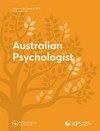A longitudinal evaluation of a biopsychosocial model predicting BMI and disordered eating among young adults
IF 2
4区 心理学
Q2 PSYCHOLOGY, MULTIDISCIPLINARY
引用次数: 1
Abstract
ABSTRACT Objective This study examined the utility of a biopsychosocial model to explain both higher body mass index (BMI) and disordered eating. The study was designed to examine the predictors of higher BMI and a number of measures of disordered eating (dietary restraint, drive for muscularity, drive for thinness, binge eating, and compensatory behaviour). Method Young adults (N = 838) recruited from seven countries, grouped into four regions (Europe, North American countries, Australia, Japan), completed an online survey, with each completion being 12 months apart. The survey included assessments of BMI and disordered eating, and a range of biological, psychological and sociocultural factors expected to predict both outcomes. Results Results revealed unique patterns of association between predictors and BMI as well as different measures of disordered eating in the four geographical regions. Conclusions The findings identify the specific nature of biopsychosocial factors that predict both higher BMI and different aspects of disordered eating. They also demonstrate that caution needs to be exercised in generalising findings from one country to other countries. Key Points What is already known about this topic: The literature has already identified various aspects of the biopsychosocial model that predicts disordered eating and higher weight. These studies have primarily focused on disordered eating in cross-sectional studies among adolescents. Obesity and disordered eating have been shown to be related What this topic adds: The study identified the biopsychosocial factors that predict higher BMI and disordered eating among young adults over a 12-month period. The study examined all components of the biopsychosocial model in the one study. The study was conducted across seven countries and identified how these relationships vary from one country to another.预测年轻人体重指数和饮食失调的生物心理社会模型的纵向评估
摘要目的本研究检验了生物心理社会模型在解释较高体重指数(BMI)和饮食紊乱方面的效用。这项研究旨在检验较高BMI的预测因素和一些饮食紊乱的指标(饮食约束、肌肉发达、追求瘦、暴饮和补偿行为)。方法年轻人(N = 838)从七个国家招募,分为四个地区(欧洲、北美国家、澳大利亚、日本),完成了一项在线调查,每次完成12项 相隔数月。该调查包括对BMI和饮食紊乱的评估,以及一系列有望预测这两种结果的生物、心理和社会文化因素。结果结果显示,在四个地理区域,预测因素与BMI之间存在独特的关联模式,以及饮食紊乱的不同衡量标准。结论这些发现确定了生物心理社会因素的特定性质,这些因素可以预测较高的BMI和饮食紊乱的不同方面。它们还表明,在将一个国家的调查结果推广到其他国家时需要谨慎。关键点关于这个话题已经知道的内容:文献已经确定了预测饮食紊乱和体重增加的生物心理社会模型的各个方面。这些研究主要集中在青少年饮食紊乱的横断面研究中。肥胖和饮食紊乱已被证明是相关的。本主题补充道:该研究确定了预测12个月内年轻人BMI升高和饮食紊乱的生物心理社会因素。这项研究在一项研究中检验了生物心理社会模型的所有组成部分。这项研究在七个国家进行,确定了这些关系在不同国家之间的差异。
本文章由计算机程序翻译,如有差异,请以英文原文为准。
求助全文
约1分钟内获得全文
求助全文
来源期刊

Australian Psychologist
PSYCHOLOGY, MULTIDISCIPLINARY-
CiteScore
3.70
自引率
5.30%
发文量
32
期刊介绍:
The Australian Psychologist is the official applied practice and public policy journal of the Australian Psychological Society. As such, the journal solicits articles covering current issues in psychology, the science and practice of psychology, and psychology"s contribution to public policy, with particular emphasis on the Australian context. Periodically, Australian Psychological Society documents, including but not limited to, position papers, reports of the Society, ethics information, surveys of the membership, announcements, and selected award addresses may appear in the journal.
 求助内容:
求助内容: 应助结果提醒方式:
应助结果提醒方式:


